In the midst of your search for a standing desk, stability should be one of your primary concerns.
That notorious wobble is one of the biggest complaints people have after purchasing a sit to stand desk.
Understanding the causes of desk instability helps to make an informed decision before spending your money.
A Sturdy Base
Having a sturdy work surface helps prevent distractions and frustration, meaning a person’s overall productivity can be improved.
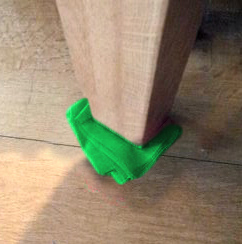
Let’s think about this idea beyond the office setting; we’ve all been out at a restaurant and ended up sitting at a table that wiggles back and forth.
If you’re anything like me, it drives you crazy! It’s an annoyance and causes frustration, making it difficult to focus on enjoying your meal.
Now, imagine that being your work surface and how that would impact your workday. This instability causes difficulties for just about anyone.
All height adjustable desks are sturdiest in the lowest position. If you never raise it, you won’t have any complaints. But that defeats the entire purpose of purchasing and owning a standing desk.
I have good news for you, though! You don’t have to suffer from standing desk wobble.
Some manufacturers make stable, adjustable workstations and products to buy.
The key is to know what to look for and make sure your purchase has those features.
Base Configurations
A table’s stability is rooted in its design.
Height adjustable desks have two basic configurations or shapes.
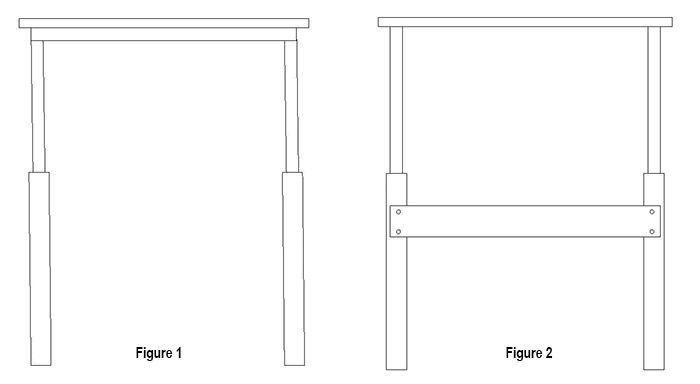
Upside Down U
The cross-brace bolted to the legs directly under the work surface creates the upside-down “U” (Figure 1).

Steps taken on the work surface is the only way of preventing wobble on a U-Style base.
Think of a flagpole in the wind: at the bottom, there is not much movement. But, at the top, the pole sways back and forth.
That’s what happens to a standing desk that only has an under work surface cross support. Also with this U design, every screw needs to be very tight.
What is the benefit of the U style base if it doesn’t eliminate table wobble? Some companies say one advantage is the knee clearance and in the same breath say that the cross support design is a knee-knocker.
I believe that companies express those sentiments because U-style designs tables are easier on inventory control and packaging.
A unique quality of the U-style designs is that the under work surface cross brace expands. This expansion means one brace extends to fit multiple work surfaces.
Since many of these U-style designs are manufactured in China, importing these tables is challenging. Most Chinese companies offer two braces with different extension ranges.
Cross Support Design
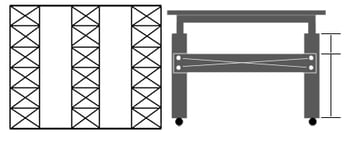
The other design that helps eliminate instability is the cross support style, as shown in Figure 2. This style has a cross brace attached to the lower, non-moving leg columns creating the look of a box under the work surface.
The cross support, although rectangular, works the same as an X-brace on a bridge or building. Figure 3 shows four bolts creating the X-brace or concentric design.
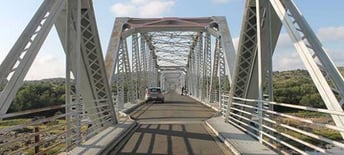
Using cross support minimizes any wiggle occurring while raising the desk. The design eliminates lateral movement, thus creating a wobble-free desk in any height position.
Unlike the U-style, the cross support design is built for a work surface of a specific size.
Column Instability
Wobble has another source, and it comes from leg instability; I call this column overlap.
Column Overlap
Inside leg column tubes, tubes nest inside each other.
Now, let’s say each tube is 20-inches long, and the inner tube slides out 15 inches. this leaves five inches left within the outside an adjustable height. The extra five inches is column overlap.
In my opinion, those five inches are the least amount of overlap needed to consider a column sturdy (dependent on the glide tolerance, explained later).
When overlap begins decreases, the table becomes more susceptible to wobble.
This leads us to the next source of column instability, glide bearings.
Glide Bearings
All height adjustable tables have glide bearing between the tubes inside the leg column. This helps the columns slide against each other and creates a smooth movement.
Glides come in different sizes helping adjustment for tube size tolerance.
When the amount of overlap between the tubes decreases, it becomes more important to use correctly fitted glide bearings.
The glide bearings help maintain stability within the column when the table gets closer to its highest position.
This is a single stage leg column.
Now with this general understanding of column overlap and glide bearings, I want to explain how those problems affect a two-stage leg column.
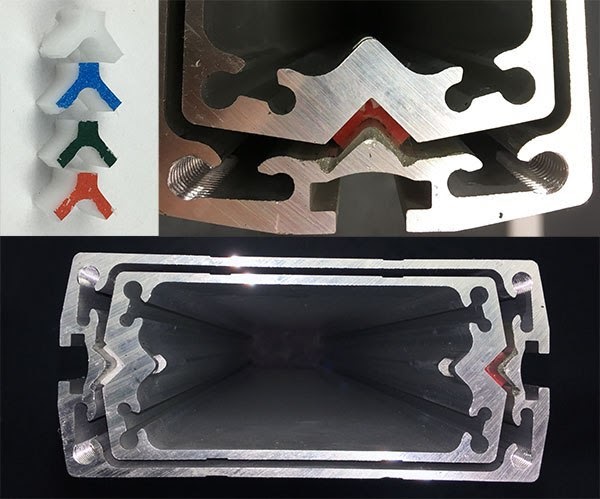
In a single stage, one tube nests within another and there’s movement between the first two tubes.
A two-stage leg column uses three tubes nested together, and there is movement between tubes one and two, and tubes two and three.
There is a higher possibility of unstable movement within the two-stage leg column because of the third tube.
However, some manufacturers offer a cross-support mounted on the two-stage, similar to a single stage, helping reduce additional wobble.
Assembly Problems
The assembly process links stability to a height adjustable table. Correct assembly minimizes table wobble.
The complexity of assembling adjustable height tables vary by manufacturer. In most cases, more parts and pieces increase the chance for mistakes. Loose screws, or no screws, is a leading cause of table instability.
Thread Lock
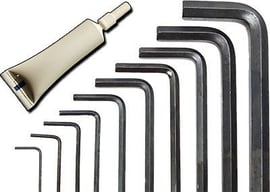
One way of helping prevent wobble is applying threadlocker material to the threads of all screws.
Remember that not all manufacturers offer thread locker material for their screws. Luckily, your local hardware store has the thread locker material available.
It is the thread locker material that helps to prevent future wiggle or looseness within the table base.
Tools
Typically, tables come with a small Allen/hex wrench or toolset designed for table assembly, but you’re better off using your tools.
The provided tools are small and won’t provide adequate leverage to fully tighten the screws during installation.
It’s important to remember that any loose screws result in movement within the table base.
If possible, use a professional installer for table assembly. Their skills dramatically cut the likelihood of any table problems.
Illustrating Desk Wobble
Changing to standing desks requires a significant financial commitment. During the decision process, trying to compare desks and choosing the best alternative is no easy task.
We’ve described what causes desk wobble, but not what wobble looks like. Since no two standing desk manufacturers build their products the same, no two desks have a similar wobble. Not to mention, no two people define wobble in the same way.
With so many adjustable height desk manufacturers in the market, even comparing the relative wobble of each desk to others becomes problematic.
The WobbleMeter by RightAngle solves that problem.
WobbleMeter
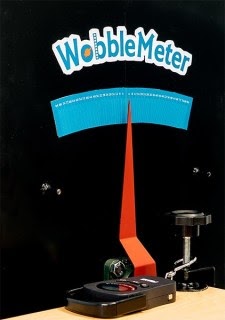
Our stability tests using the WobbleMeter measures the wobble of a standing desk.
Using the same methods against the same scale for a variety of desks, we compare results from a variety of standing desks manufacturers.
We share our results on the Scoreboard page. Similar to golf, the lower the score, the better.
Smaller totals mean there isn’t much wobble in the standing desk.
Click this link for an in-depth explanation of how RightAngle performs WobbleMeter tests.
Recommendation
If you’re looking for a sturdy height adjustable desk, we recommend:
- Buying one with a cross-support mounted to the base columns (Figure 2)
- A single-stage leg column
- Securely tighten all screws during assembly using a thread locker
These recommendations aside, sometimes a two-stage leg column may be a better fit for some.
A two-stage goes lower than the standard 27-inch height and travels up to 48-inches, or even 51-inches depending on the manufacturer.
So, if you’re shorter than 5’5,” taller than 6’5”, or your situation requires a more extensive travel range, the two-stage leg column is your best fit.
Next time you’re out for coffee or dinner, and you get that pesky, wobbly table, remember you don’t have to put up with that while using your new height adjustable desk.

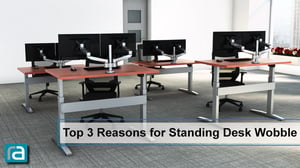
COMMENTS